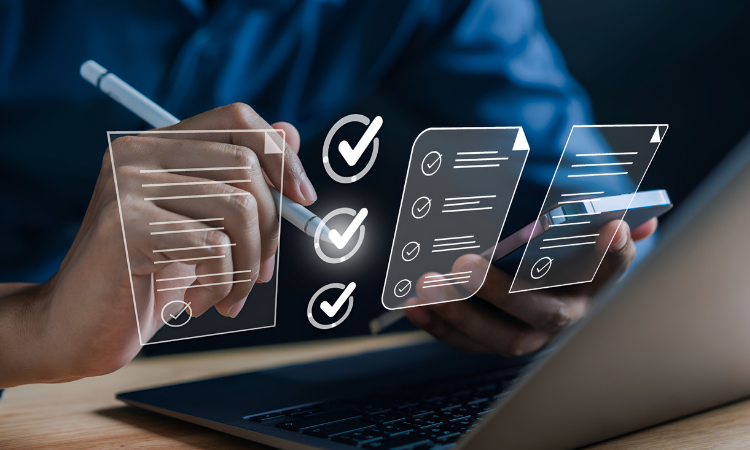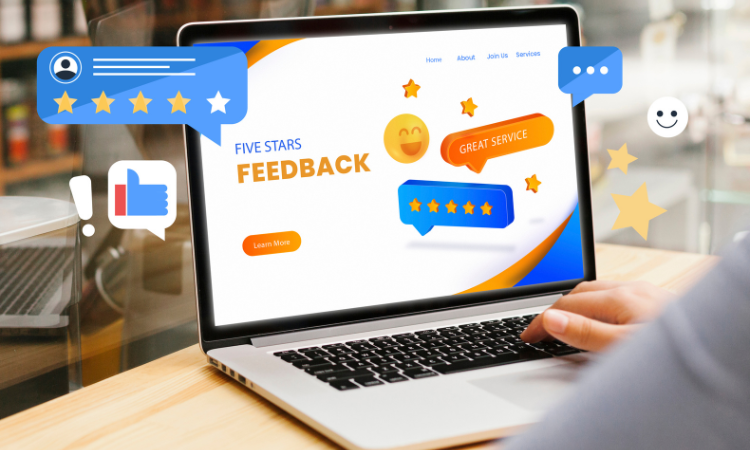Have you ever noticed how people hesitate when asked for feedback—especially when their name is attached? Whether it’s an employee survey or a post-purchase customer feedback form, the fear of being judged often prevents respondents from being completely honest.
That’s where anonymous surveys change everything. When people know their identity won’t be tracked, they tend to share candid feedback — what they truly feel, not what they think you want to hear. It helps HR teams uncover hidden cultural issues, managers understand employee engagement better, and CX leaders identify real customer pain points.
Organizations across industries — from HR to healthcare to retail — use anonymous feedback surveys to understand their people and customers better. They allow teams to collect sensitive feedback, identify pain points early, and make data-backed improvements without bias or fear.
The challenge isn’t that customers or employees don’t want to share their opinions. It’s that they need assurance their voice won’t lead to negative consequences.
In this guide, we’ll explore how to use anonymous surveys to overcome that hesitation, gather honest responses, and turn them into meaningful improvements — securely, confidentially, and effectively.
TL;DR
Anonymous Surveys are the most effective way to gather honest, bias-free feedback while protecting respondent privacy. Here’s what you need to know:
- Anonymous surveys remove identifying details (like names, emails, and IP addresses) so people feel safe sharing candid opinions.
- They build trust and openness, encouraging participants to provide genuine, honest feedback without fear of negative consequences.
- Use them to collect sensitive feedback and uncover issues that traditional surveys often miss.
- Ideal for employee engagement, customer satisfaction, and sensitive feedback where transparency matters.
- Easily create anonymous surveys in Zonka Feedback and toggle anonymity settings in a few clicks.
- View and analyze anonymous responses using built-in dashboards and powerful reporting tools without revealing identity data.
👉 Done right, you’ll collect anonymous feedback that’s more authentic, more actionable, and far more valuable for improving experiences.
What Are Anonymous Surveys?
An anonymous survey is a type of feedback survey where responses aren’t linked to a person’s identity. No names, emails, IP addresses, or device details are collected — just pure, honest opinions.
In simple terms, it’s a way to collect feedback privately. Respondents can share their thoughts openly, knowing their information isn’t being tracked or stored.
Here’s what defines an anonymous survey:
- No personal tracking: Respondents stay truly anonymous — their details are never stored or linked.
- True privacy: Every response is stored without any traceable detail.
- Privacy First: Data is collected without linking responses to specific users or devices.
- Encourage honesty: People are more comfortable sharing genuine thoughts when they know they won’t face negative consequences.
- Promote trust: Builds stronger relationships between organizations and their audiences.
Anonymous surveys are widely used across different areas — from employee engagement surveys to customer experience studies and research feedback forms — wherever privacy and honesty are important.
Even simple feedback tools like Google Forms and Microsoft Forms can be set to collect responses anonymously — just ensure email collection and tracking are turned off.
Why Anonymous Surveys Matter
Collecting feedback is easy — getting people to be truly honest is the real challenge. That’s where anonymous surveys make all the difference. They create a safe space for people to share what they actually think, not just what they think you want to hear.
Here’s Why Anonymous Surveys Matter
-
Encourage honesty
When people know their names or details aren’t being recorded, they open up. You get raw, authentic feedback that reveals how they really feel.
-
Remove fear and bias
Without the worry of being identified, respondents can share negative experiences or tough opinions without hesitation. It eliminates the fear of negative consequences.
-
Increase participation
Anonymity builds trust, and trust leads to higher response rates. People are more likely to participate when they feel their privacy is protected.
-
Uncover deeper insights
Honest responses often reveal hidden issues or opportunities that structured surveys miss — helping you make smarter, people-focused decisions.
-
Build a culture of trust
Respecting privacy shows that you value openness. Over time, this strengthens relationships with both customers and employees.
💡 Quick Tip: To get the best results, remind participants that their responses are 100% anonymous before they start. It immediately boosts confidence and participation.
How to Create Anonymous Surveys in Zonka Feedback
Creating an anonymous survey in Zonka Feedback is simple. With just a few steps, you can disable respondent tracking, protect identities, and start collecting honest, unbiased feedback.
Step 1: Log in and Create a New Survey
- Go to your Zonka Feedback dashboard.
- Click “Create New Survey.”
- Choose your starting point:
- AI Survey Builder — instantly generate surveys with AI prompts.
- Templates — pick from ready-made templates for employee engagement, customer feedback, or CSAT.
- Start from Scratch — use the drag-and-drop builder to customize everything.
-2.png?width=2021&height=1257&name=frame_generic_light%20(12)-2.png)
Step 2: Disable Respondent Tracking
By default, if you distribute surveys through Email or SMS, Zonka Feedback automatically identifies who received and responded to the survey. To make your survey anonymous, you’ll need to turn off tracking.
Here’s how:
- Go to your survey and click on the Distribute tab.
- Select the channel you’re using — either Email or SMS.
- Scroll down to the bottom of the screen.
- You’ll see a section called Respondent Tracking and then click “Disable” to turn off tracking.
-1.png?width=2017&height=1257&name=frame_generic_light%20(14)-1.png)
Once disabled, the system won’t identify or log who viewed or responded to your survey.
This means you’ll be able to collect anonymous feedback via both Email and SMS without storing personal identifiers.
Note: If you’re using survey links or QR Codes, anonymity is maintained automatically unless your form includes questions requesting personal data (like name, phone number, or email).
Step 3: Add and Customize Questions
Once anonymity is set, design questions that encourage open and honest responses.
Tips for designing effective anonymous surveys:
- Keep questions neutral and avoid leading language.
- Add rating scales (1–5 or 0–10) for quick opinions.
- Include open-ended questions for deeper insights.
- Avoid any field that asks for contact details or identifiable info.
Step 4: Choose the Right Distribution Channel
Once your survey is ready and anonymity is enabled, it’s time to distribute it.
In Zonka Feedback, you can collect anonymous feedback across several channels — as long as you’ve disabled tracking and avoided adding personal data fields.
Here’s how it works 👇
-
Email & SMS Surveys:
These channels can be used anonymously once you’ve disabled respondent tracking (as explained in Step 2).
This ensures that the system doesn’t identify who viewed or responded to your survey.
-
Survey Links:
If you share your survey via a public link or QR code, responses are automatically anonymous — provided your form doesn’t include any identifying questions like name, phone, or email.
-
Web Widgets, In-App, and Offline Surveys:
These channels can also be used to gather anonymous feedback, especially when no user attributes or contact data are passed.
Essentially, any channel can support anonymity as long as no personal identifiers are being tracked or requested.
Step 5: View and Analyze Anonymous Responses
Once responses start rolling in:
- Go to the Reports tab for overview metrics.
- Filter by questions, channels, or sentiment.
- View overall NPS, CSAT, or CES trends without revealing identities.
- Export anonymous reports for team analysis.
-1.png?width=2142&height=1198&name=frame_generic_light%20(15)-1.png)
💡 Bonus Tip: Test Your Survey Before Sharing
Run a quick test:
- Open the survey preview link in an incognito browser.
- Submit a dummy response.
- Check if any identifying data (like contact ID or device info) appears in reports.
If not — your survey is truly anonymous.
Pro Tips & Best Practices
Creating an anonymous survey is one thing — but making it effective takes a few thoughtful adjustments. The goal is to make respondents feel comfortable, confident, and understood while keeping the data useful and actionable.
Here are some pro tips and best practices to make your anonymous surveys truly impactful 👇
Before You Launch
- Communicate clearly: Tell respondents upfront that the survey is anonymous and their identity will not be collected. Transparency boosts participation.
- Avoid identifiable questions: Even optional name or email fields can discourage honest participation — skip them entirely.
- Keep it short and focused: A concise, relevant survey encourages higher completion rates.
While Designing the Survey
- Use neutral phrasing: Avoid leading questions like “Don’t you agree that…” — they bias responses.
- Mix question types: Combine multiple-choice and open-ended questions for balanced data.
- Test before publishing: Run an internal test to ensure no identifying fields or metadata are being captured.
After Collecting Responses
- Group insights instead of individuals: Focus on trends or themes rather than who said what.
- Share results transparently: When people see their feedback leads to real action, they’re more likely to engage next time.
🧠 Pro Tip: Anonymous surveys are most powerful when paired with consistent communication. Let respondents know that their feedback has been heard and acted upon — it closes the trust loop.
Real-World Use Cases
Anonymous surveys aren’t just for HR teams - they’re powerful across industries and touchpoints. Whenever there’s a need for honest feedback or sensitive insights, anonymity helps uncover the truth that traditional surveys might miss.
Here are a few real-world scenarios where anonymous surveys make a real impact.
👩💼 1. Employee Engagement & Workplace Culture
In workplaces, employees often hesitate to share dissatisfaction about management, workload, or team dynamics if their names are attached.
Anonymous employee engagement surveys allow them to speak openly about morale, leadership effectiveness, and overall satisfaction - without fear of judgment.
This helps HR leaders gather anonymous feedback, track trends over time, and take meaningful action to improve the work environment.
🛍️ 2. Customer Experience & Service Feedback
Brands use anonymous feedback surveys to capture candid customer opinions about their experiences.
When anonymity is assured, customers feel free to mention both the good and the bad - product issues, service delays, or pricing concerns.
It’s a great way to collect sensitive feedback that helps refine customer service processes and strengthen loyalty.
🏥 3. Healthcare and Patient Feedback
Healthcare professionals often use anonymous surveys to measure patient satisfaction.
Patients are more open about their care experience, wait times, and comfort levels when their identity remains confidential - making the data more accurate and actionable.
🎓 4. Education & Training Programs
Schools and corporate trainers use anonymous surveys to evaluate courses and instructors.
Students and participants share completely honest opinions about teaching quality or curriculum effectiveness without fear of repercussions.
Whether you’re in HR, CX, healthcare, or education, anonymous surveys offer a safe, transparent way to gather valuable insights that drive improvement and trust.
Pros & Cons
Like every feedback method, anonymous surveys have their strengths and limitations. When used thoughtfully, they’re incredibly powerful — but a few watch-outs can help you avoid common pitfalls.
Here’s a quick breakdown 👇
| Pros | Cons / Watch Outs |
|---|---|
| 🗣️ Encourage honest feedback: People share what they truly think without fear of judgment. | ⚠️ Limited follow-up: Since responses are anonymous, you can’t reach out for clarification or deeper context. |
| 💬 Help collect sensitive feedback: Great for topics like workplace culture, product issues, or leadership reviews. | ❗ Risk of vague or emotional answers: Some respondents may provide incomplete or extreme feedback. |
| 🔒 Protect privacy and build trust: Shows your organization values transparency and confidentiality. | ⚙️ Setup precision needed: If tracking or data fields are left enabled by mistake, anonymity can be compromised. |
| 📈 Improve participation rates: People are more likely to respond when identity isn’t required. | 🧩 Difficult to verify authenticity: Since responses aren’t tied to individuals, duplicates may occur. |
💡 Pro Tip: Always review your survey configuration carefully — disable all tracking options and avoid any fields that capture personal or identifying information. This ensures true anonymity.
Closing Thoughts
At its core, an anonymous survey isn’t just a feedback tool — it’s a trust-building mechanism. When people know their voices are heard without judgment or exposure, they share honest feedback that drives meaningful change.
Whether you’re improving employee engagement, refining customer experience, or uncovering hidden organizational challenges, anonymity helps you focus on what truly matters — the message, not the messenger.
Anonymous surveys empower teams to act with confidence, identify blind spots, and strengthen relationships with employees, customers, and communities alike.
Ready to put it into practice?
👉 Try creating anonymous surveys in Zonka Feedback — and see how effortless it is to collect genuine, unbiased insights that inspire real improvements.
.jpg)
.jpeg?width=150&height=150&name=casual%20photograph%20(1).jpeg)


.jpg)
.jpg)
.jpg)

.jpg)

